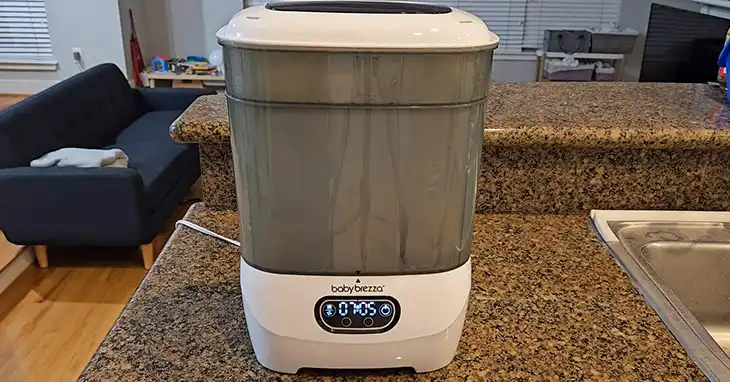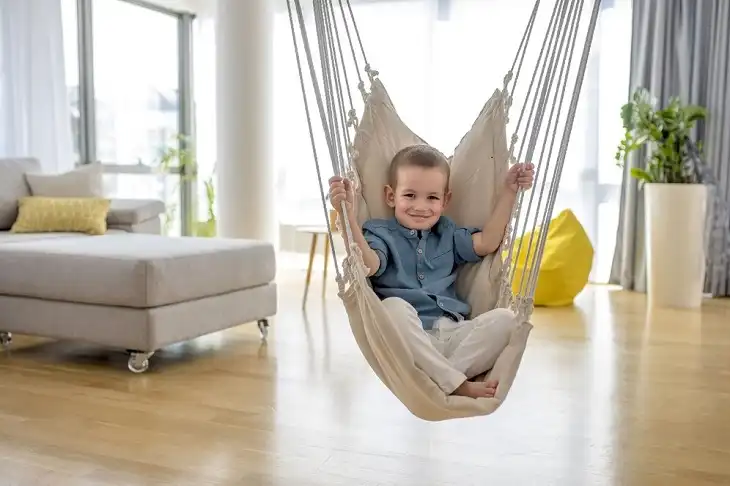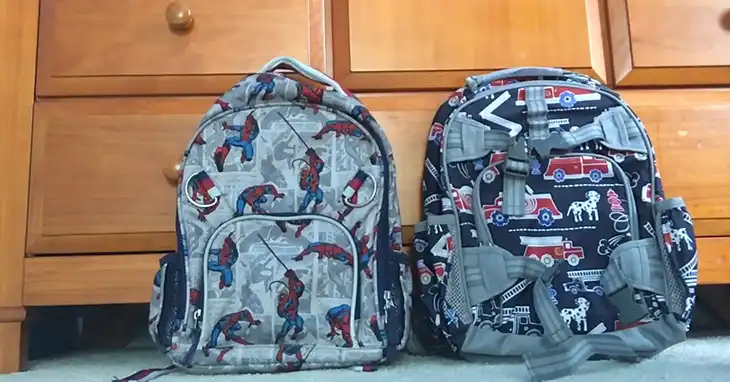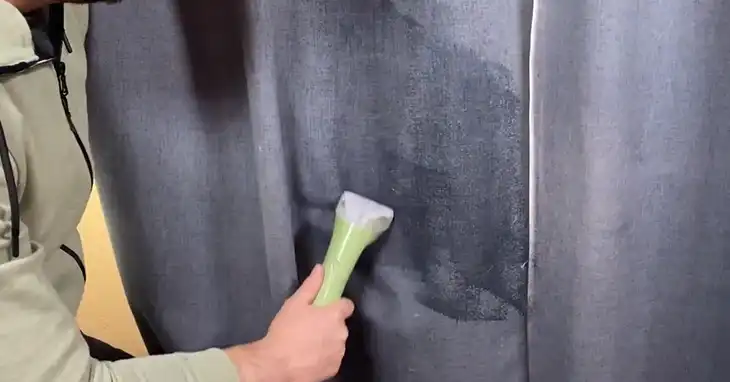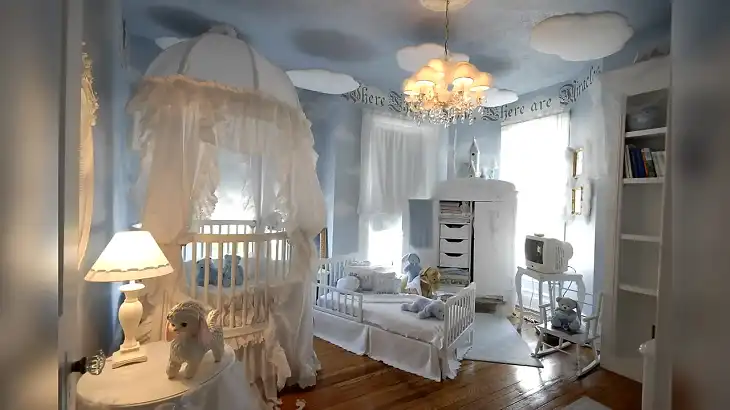How to Keep Pacifiers from Falling Out of Crib?
As any parent knows, pacifiers can be a lifesaver when it comes to soothing and comforting a fussy baby. However, the constant struggle of pacifiers falling out of the crib and disrupting sleep is a frustration shared by many families.
Not only are lost pacifiers a hassle to keep replacing, but they also pose potential safety risks. A pacifier falling out of the crib could present a choking hazard if not quickly retrieved.
Fortunately, there are several clever methods to help keep pacifiers securely in the crib, allowing for more peaceful slumbers all around. Let’s explore some of the most effective solutions:
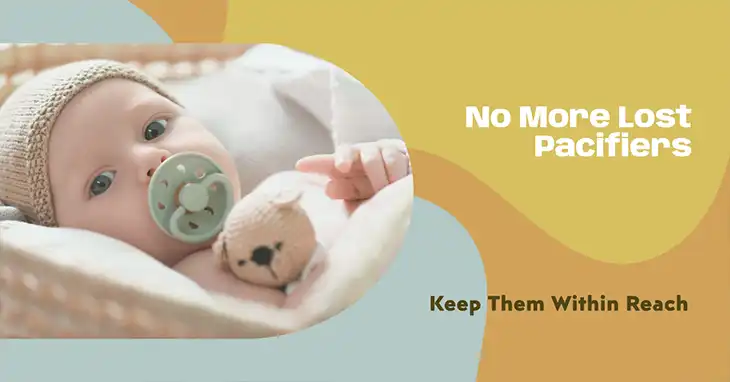
1. Use Pacifier Clips and Holders

One of the most popular solutions is using pacifier clips or holders. These handy accessories secure the pacifier to baby’s clothing or the crib rails, preventing it from falling out and getting lost. There are various types to choose from:
| Type | Description | Pros | Cons |
| Silicone Clips | Plastic or silicone clips that attach to baby’s clothing | Durable, easy to clean | May come undone if not secured properly |
| Fabric Clips | Soft fabric clips that attach to clothing or crib rails | Gentle on baby’s skin, versatile | May fray over time with frequent use |
| Animal-Shaped Holders | Stuffed animal with a clip or pocket to hold the pacifier | Cuddly comfort for baby, easy to locate | May become a potential choking hazard if pieces detach |
When choosing a clip or holder, consider your baby’s age, comfort level, and the design of your crib. The American Academy of Pediatrics (AAP) recommends using clips or holders with a short cord length to prevent potential strangulation hazards.
Safety Tip: Always supervise your baby when using pacifier clips or holders, and remove them when not in use to avoid any accidental entanglement or choking risks.
2. Try The WubbaNub
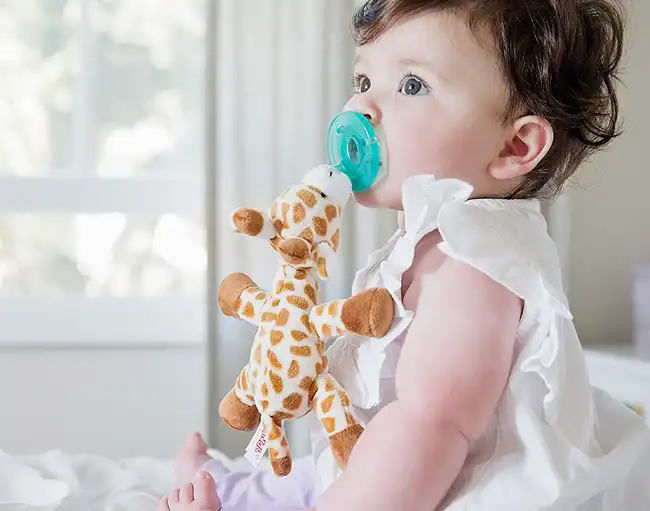
A popular product that combines the convenience of a pacifier holder with a cuddly stuffed animal is the WubbaNub. This innovative soother consists of a pacifier attached to a soft, plush toy, making it easier for babies to locate and grab onto.
Many parents rave about the WubbaNub’s effectiveness in online communities like Lucie’s List, citing benefits such as:
- Easy for little hands to find and hold onto
- Provides comfort from the cuddly stuffed animal
- Encourages independence as babies learn to retrieve it themselves
However, it’s important to note that the WubbaNub may not suit every baby’s preference, and some parents express concerns about their child becoming too attached to the stuffed animal portion.
3. Make a DIY Pacifier Pocket
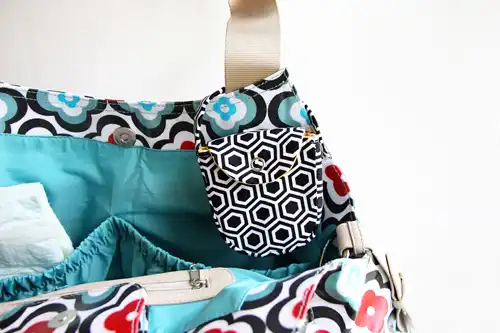
For those with a crafty streak, a DIY pacifier pocket can be a budget-friendly and customizable solution. By sewing a small fabric pocket onto the crib mattress, you create a designated spot for pacifiers to nestle securely.
Cut a fabric strip wider than your crib mattress and 8-10 inches long. Hem the long sides. Fold in half lengthwise, right sides together, and sew along the raw edge using a 1/2 inch seam allowance to create a tube. Turn right-side out. Fold and topstitch the open ends. Place the pocket on the mattress, pin, and sew the top and bottom edges to attach. Optionally, add ribbon ties or make multiple pockets. A simple, clever way to keep pacifiers securely in the crib.
This DIY solution not only keeps pacifiers within reach but also adds a personalized touch to your nursery decor.
4. Use Crib Mesh Liners

If you’re concerned about pacifiers falling through the slats of your crib, a mesh liner can provide a breathable barrier to keep them contained. These liners attach securely to the inside of the crib and create a soft, mesh-enclosed space for your little one to sleep safely.
While mesh liners effectively prevent pacifiers from escaping, it’s crucial to address any potential safety concerns. Some online resources caution against using liners that are not well-ventilated, as they could increase the risk of overheating or Sudden Infant Death Syndrome (SIDS).
To ensure your baby’s safety, follow these guidelines when using a crib mesh liner:
- Choose a liner made from breathable, lightweight mesh material
- Ensure the liner is securely attached and free from any loose fabric or gaps
- Remove the liner once your baby can roll over or sit up unassisted
- Never use a liner with loose strings, ties, or ribbons, as they pose a strangulation hazard
By selecting a high-quality, well-ventilated mesh liner and following safe sleep guidelines, you can create a cozy, pacifier-proof environment for your little one.
5. Enforce The Pacifier Fairy Technique (for Older Babies)
As your baby grows older and becomes more independent, the “Pacifier Fairy” technique can be a gentle way to encourage them to find their own pacifier when it falls out of the crib. This positive reinforcement method, often discussed in parenting forums like What to Expect, involves praising and rewarding your baby for retrieving their pacifier themselves.
Here’s how it works:
- Explain to your baby that the “Pacifier Fairy” will come and take away any pacifiers left out of the crib, but they can keep the ones they find on their own.
- When your baby drops their pacifier, resist the urge to immediately retrieve it for them.
- If they manage to find and pick up the pacifier themselves, praise and celebrate their achievement enthusiastically.
- Optionally, you can offer a small reward, like a sticker or a special treat, to reinforce the desired behavior.
Not only does this technique promote self-soothing skills, but it also helps build your child’s confidence and independence.
6. Place Multiple Pacifiers
If your baby has a knack for losing pacifiers, consider strategically placing multiple pacifiers around the crib before bedtime. By scattering a few pacifiers in different safe and breathable locations, you increase the chances of your little one finding one if it falls out during the night.
This straightforward solution is recommended by experienced parents in online forums and resources like WikiHow. However, it’s essential to ensure that all pacifiers are placed in areas where they cannot pose a suffocation risk and to remove any extras once your baby is awake and supervised.
Teaching Self-Soothing Skills (Long-Term Solution)
While pacifiers can be a helpful soothing tool, experts suggest encouraging self-soothing skills as a long-term solution to promote better sleep habits. By gently guiding your baby to self-soothe without relying solely on a pacifier, you can help them develop crucial emotional regulation and independence.
Resources like the Through The Night Method and Lovevery offer tips and techniques for teaching self-soothing, such as:
- Offering comfort objects like a soft blanket or stuffed animal
- Introducing white noise or calming music during sleep times
- Allowing your baby to self-settle with gentle reassurance
- Establishing consistent bedtime routines
It’s important to note that self-soothing is a gradual process and may take time and patience. However, by gradually reducing pacifier reliance and fostering self-soothing skills, you’ll be setting your child up for better sleep habits in the long run.
When to Wean the Pacifier
While pacifiers can provide comfort and aid in self-soothing, most experts recommend weaning your child off the pacifier by the age of 2 to 4 years old. Prolonged pacifier use beyond this age range may lead to potential issues like speech development delays or dental problems.
If you notice any of the following signs, it may be time to consider weaning:
- Your child is approaching their second birthday
- They exhibit lisping or other speech difficulties
- Their teeth are misaligning or developing overbite issues
To ensure a smooth transition, experts recommend gentle weaning strategies like:
- Gradually limiting pacifier use to specific times or locations
- Offering alternative comfort objects or activities
- Involving your child in the decision-making process
- Celebrating milestones and rewarding pacifier-free periods
By taking a positive and gradual approach, you can help your child successfully wean off the pacifier while minimizing any potential distress or setbacks.
Conclusion: Finding the Right Solution for Your Family
As you can see, there are numerous creative and effective solutions to help keep pacifiers securely in the crib, ensuring more peaceful slumbers for both you and your little one. From handy clips and holders to DIY pockets and strategic pacifier placement, there’s an option to suit every family’s needs and preferences.
Remember, while pacifiers can be a valuable soothing tool, it’s essential to prioritize your baby’s safety and comfort above all else. Always follow safe sleep guidelines, supervise your child when using any pacifier retention methods, and be mindful of potential choking or strangulation hazards.
Frequently Asked Questions
- Can I use a pacifier clip and a wearable blanket/sleep sack at the same time?
It’s generally not recommended to use a pacifier clip with a wearable blanket or sleep sack, as the combination could pose a strangulation risk. Instead, consider attaching the clip directly to your baby’s clothing or opting for a pacifier holder that attaches to the crib rails.
- How do I clean and maintain pacifier clips and holders?
Most pacifier clips and holders can be easily cleaned with mild soap and warm water. Some may also be dishwasher-safe or machine-washable. Always check the manufacturer’s instructions for proper cleaning and care.
- Is it safe to use a pacifier with a stuffed animal attachment once my baby starts rolling over?
Once your baby begins rolling over or showing signs of increased mobility, it’s best to discontinue the use of pacifiers with stuffed animal attachments to prevent potential suffocation hazards. At this stage, consider transitioning to a more secure pacifier clip or holder.
- Can I use a crib mesh liner with a crib bumper or other bedding?
It’s generally not recommended to use crib mesh liners in combination with crib bumpers or other loose bedding, as this can increase the risk of entrapment or suffocation. Crib liners should only be used with a tight-fitting crib sheet.
- How do I introduce the “Pacifier Fairy” technique to my child?
When introducing the “Pacifier Fairy” concept, make it a fun and positive experience. You can create a special story or song about the fairy, and even leave a small “fairy dust” trail or note to reinforce the idea. Involve your child in the process and celebrate their successes with praise and small rewards.

